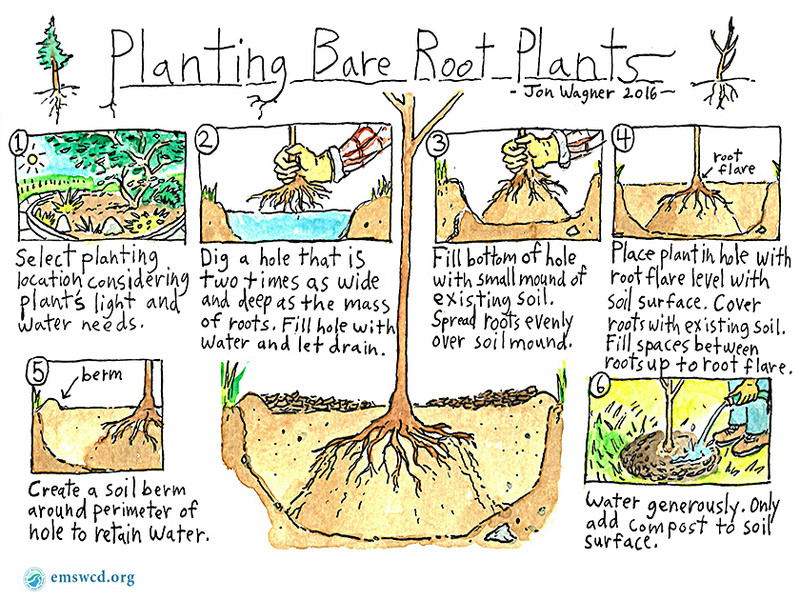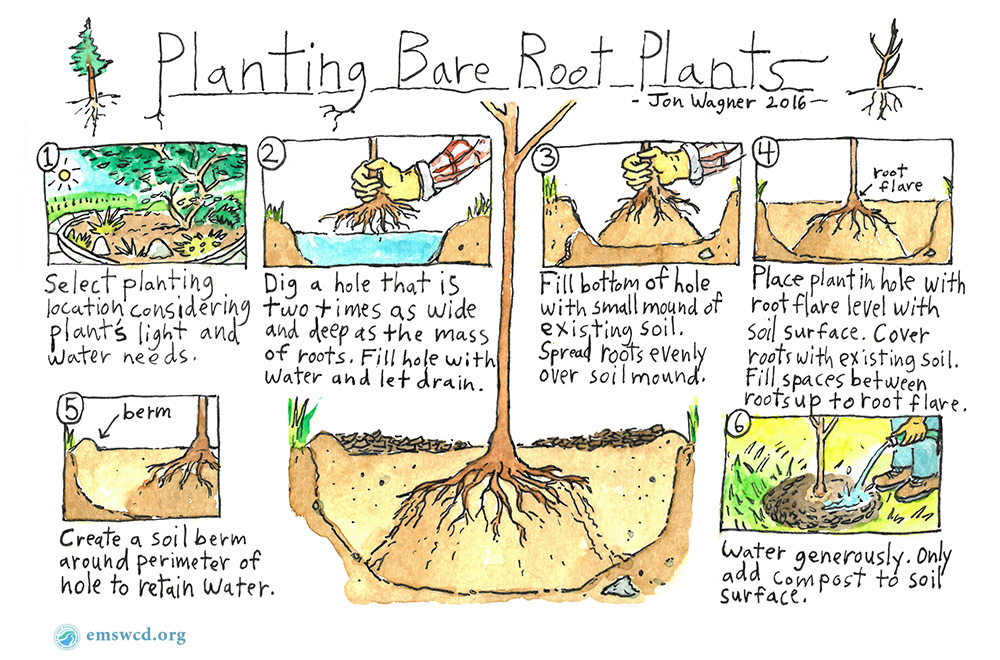Once your plants have arrived: what do you do next with your bare root plants or bulbs?
Things Needed:
- Shovel
- Compost
- Box your plant arrived in and collected cardboard to cover the area around each bare root plant or bulb
- Hose - if not slated to rain the day of planting
- Determine the location of where the bare root plant or bulb is to be planted. Take a look at your plant’s requirements for life. These include types of soils it prefers, needs for sun/shade, water needs, and shape (width and height). Once you determine the plant’s needs you can look around at your desired area of use and see where the plant’s requirements are met. This is where you should plant your bare root plant/bulb.
- Depending on the state of your soil you may be able to plant upon arrival or you may need to wait until the soil can be worked with. If you cannot dig, an option is to pot all of your bare root plants together in a pot of the soil type it prefers. Maintain the plants in a similar climate they would prefer if planted, remembering that they will need to be kept warmer because they are in a pot. Having them alongside your home in a sunny spot is an option.
- If your soil is ready to be dug into, then you can dig a hole 1 to 1.5 feet wide and twice as deep as the root ball. Place the plant root ball down into the center of the hole.
- While holding onto the plant with one hand, pack in the soil you dug out of the hole around the plant’s root ball. Fill the hole around the rootball, leaving the crown (where the trunk/stem of the plant reaches the rootball) exposed at the soil line.
- Cover the area around the plant with 1 inch of compost and/or biochar.
- Take the box of your plant (remove the tape from the box) and shape it to fit around the base of the plant. Leave 1 to 2 inches free around the base of the plant.
- Cover the cardboard with mulch, leaves, or pine needles.
- Water it well, unless slated to rain that day or the next.
- Maintain watering for the first 2-6 weeks if no rain slated during that time.

